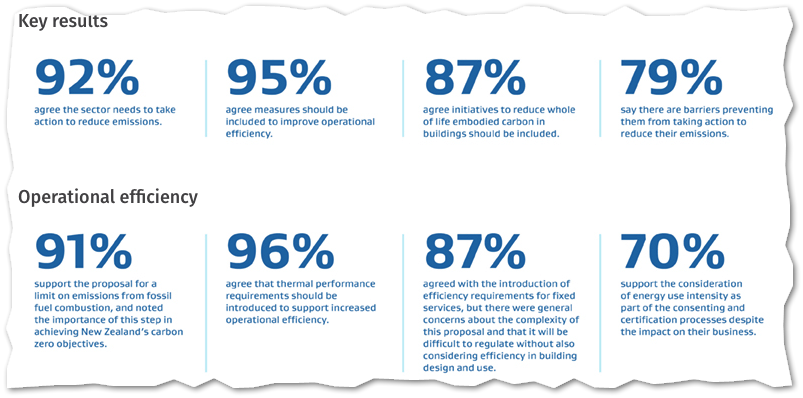MBIE has provided its initial feedback based on consultation with industry on its “Building for climate change”.
There are some promising signs from industry as the snapshot below indicates.

We developed our own embodied carbon early design calculator based on the HPCD Handbook data. We also use LCAQuick from BRANZ for more detailed design-level studies. Based on this work, we completely agree that there needs to be a standard New Zealand method to calculate the operational carbon of buildings. It’s been a decent chunk of work to back out how BRANZ and others have tackled this in the technical literature; everyone involved agrees we need a standard methodology.
We intend to provide our calculations to MBIE as ideas for its staff to consider. My recommendation is that a simple tool like PHPP is used for simple buildings (or the NZGBC ECCHO tool, which is a simplified interface to PHPP). However, the inputs need to be VERY clear. Otherwise you’ll have silly results that don’t aid the building design. This is even more important when using complicated tools like EnergyPlus. We often run EnergyPlus models and get results for heating energy usage that compare well to PHPP. But we also often see models from consultants that show zero heating is required where they have clearly used inappropriate internal loads etc and so the results are bogus.
From the document’s “Key Themes” summary:
- Information needs to be more available around building low carbon
- Cost is a major concern for people
- Reusing building materials is something people want to be able to do to reduce costs, and our impact on the planet
- Prefabrication is seen as part of the solution
- Building strength and resilience shouldn’t be sacrificed to reduce embodied carbon
- Consenting shouldn’t be hard – and there should be simple consent methodology, tools and information to support low carbon materials and methods
- Monitoring is needed to ensure the operational efficiency gains are realised and to determine if the modelling works
- Existing buildings are an issue of big debate – whether or not they should be included in the initial plans
- Government needs to lead the way in making changes.”
Full report is available here:
https://www.mbie.govt.nz/building-and-energy/building/building-for-climate-change/